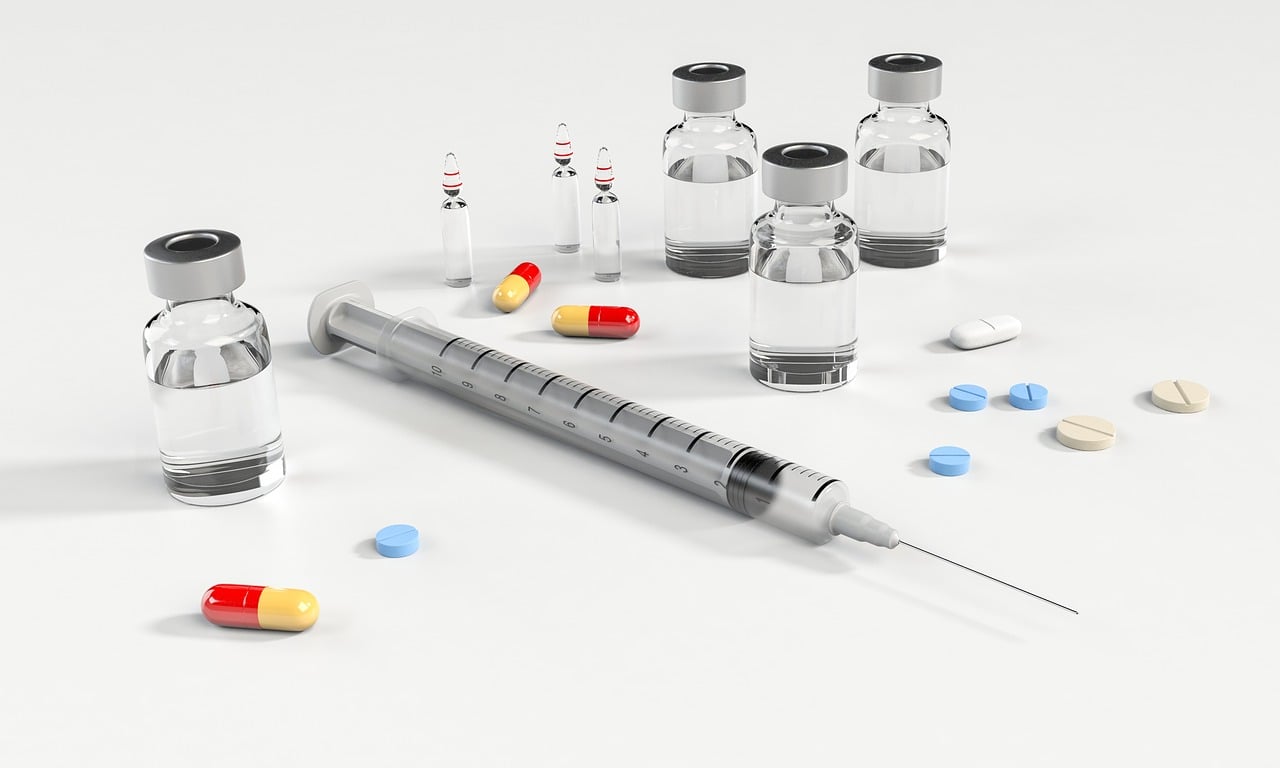Introduction
Statins, a class of medications renowned for their ability to lower cholesterol levels, have played a pivotal role in reducing the risk of cardiovascular diseases. However, recent research has raised concerns about a potential link between statin use and an increased risk of developing diabetes. In this article, we will explore the relationship between statins and diabetes, shedding light on the latest research findings and offering guidance on managing associated risks.
Statins, a class of medications renowned for their ability to lower cholesterol levels, have undoubtedly been instrumental in reducing the risk of cardiovascular diseases, saving countless lives in the process. However, as with any medication, ongoing research and analysis reveal new insights into their effects on the body.
In recent years, concerns have emerged regarding a potential association between statin use and an increased risk of developing diabetes. This is a nuanced and evolving area of study, and it’s essential to delve deeper into the details. In this article, we embark on a journey to explore the intricate relationship between statins and diabetes.
The initial findings are intriguing and warrant close attention. Research has indeed suggested a correlation between statin use and a slightly elevated risk of diabetes, particularly in certain subgroups of individuals. However, it’s crucial to emphasize that correlation does not imply causation. While the link between statins and diabetes is a topic of active investigation, the benefits of statins in reducing cardiovascular risk remain well-established.
Our aim is to provide clarity amidst the ongoing debate by shedding light on the latest research findings. We will navigate the complex terrain of potential risks and benefits, offering insights into who might be more susceptible to this potential side effect and what proactive steps can be taken to mitigate any associated risks. Additionally, we will explore the importance of informed decision-making in consultation with healthcare providers.
Understanding the nuances of the statin-diabetes connection is vital for those considering or currently taking these medications. Our goal is to empower readers with knowledge, enabling them to make well-informed choices about their heart health while maintaining awareness of potential risks. Ultimately, by navigating this complex landscape with insight and vigilance, we can continue to harness the benefits of statins in our quest for heart health and overall well-being.
Looking for more insights? You’ll find them right here in our extended coverage: Evaluation and Management of Youth-Onset Type 2 Diabetes: A …
Before delving into the statin-diabetes connection, it’s essential to understand the primary purpose of statins. Statin medications, such as atorvastatin (Lipitor) and simvastatin (Zocor), are prescribed to lower LDL (low-density lipoprotein) cholesterol levels in the blood. Elevated LDL cholesterol is a significant risk factor for atherosclerosis, the narrowing and hardening of arteries that can lead to heart attacks and strokes.
Before we explore the intricate relationship between statins and diabetes, it’s crucial to grasp the fundamental role statins play in our health. Statin medications, which encompass popular drugs like atorvastatin (Lipitor) and simvastatin (Zocor), are primarily prescribed with a singular mission: to reduce LDL (low-density lipoprotein) cholesterol levels circulating in our bloodstream. Understanding this primary purpose lays the foundation for comprehending their potential effects on other aspects of health.
Elevated LDL cholesterol, often dubbed the “bad” cholesterol, poses a significant threat to our cardiovascular well-being. It acts as a stealthy accomplice in the development of atherosclerosis, the insidious process wherein arteries narrow and harden due to the buildup of fatty deposits. The consequences of atherosclerosis are dire, as it can ultimately culminate in heart attacks and strokes, two of the leading causes of mortality worldwide.
Statins emerge as the defenders of our cardiovascular system in this scenario. By curbing the production of LDL cholesterol in the liver and enhancing its removal from the bloodstream, they help bring cholesterol levels under control. This, in turn, reduces the risk of atherosclerosis and the devastating cardiovascular events associated with it.
However, as we delve into the relationship between statins and diabetes, we must consider potential complexities. While statins play a pivotal role in cholesterol management, some studies have suggested a connection between statin use and an increased risk of diabetes. This association is a subject of ongoing research and debate, with scientists seeking to unravel the precise mechanisms at play.
It’s essential to recognize that the potential risk of statin-induced diabetes must be weighed against the well-established benefits of these medications in preventing heart disease. For individuals at high risk of cardiovascular events, the protective effect of statins often far outweighs the potential risks associated with diabetes.
In summary, statins, like atorvastatin and simvastatin, are first and foremost cholesterol-lowering agents, safeguarding us from the perils of elevated LDL cholesterol and atherosclerosis. While the relationship between statins and diabetes remains a topic of investigation, their unquestionable role in preserving heart health underscores their significance in the field of medicine. Balancing the potential risks and rewards is a decision best made in consultation with a healthcare provider, ensuring that each patient’s unique health needs are considered for optimal well-being.
To delve further into this matter, we encourage you to check out the additional resources provided here: Low-density lipoprotein cholesterol-lowering therapy in the primary …

Over the years, numerous studies have explored the potential link between statin use and an increased risk of diabetes. While research findings have been mixed, some trends have emerged:
Over the years, extensive research has delved into the complex relationship between the use of statin medications and the potential risk of developing diabetes. This exploration has yielded a body of evidence that, while at times presenting mixed findings, has highlighted several key trends and considerations that merit our attention:
Risk Assessment: Studies have consistently underscored the importance of individualized risk assessment when it comes to the potential link between statins and diabetes. Not all statin users face the same level of risk, and factors such as age, existing health conditions, and genetic predisposition can influence an individual’s susceptibility.
Type 2 Diabetes: The majority of research has focused on the development of type 2 diabetes, the more common form of the disease. Findings suggest that while there may be an association between statin use and an increased risk of type 2 diabetes, the overall risk is relatively modest in most cases.
High-Dose Statins: Some studies have suggested that the risk of developing diabetes may be higher among individuals taking high-dose statins compared to those on lower doses. This observation emphasizes the importance of prescribing the lowest effective dose of statins to achieve cholesterol-lowering goals.
Benefit-Risk Analysis: It’s crucial to frame the potential risk of diabetes associated with statin use within the context of the significant cardiovascular benefits these medications provide. For many individuals, the reduction in heart disease and stroke risk far outweighs the modest diabetes risk.
Monitoring and Lifestyle: Regular monitoring of blood glucose levels is essential for individuals taking statins, especially those with existing diabetes risk factors. Additionally, adopting a heart-healthy lifestyle, including dietary modifications and regular exercise, can mitigate the potential risk and promote overall well-being.
Shared Decision-Making: In clinical practice, a shared decision-making approach between healthcare providers and patients is key. Open and honest discussions about the potential risks and benefits of statin therapy, along with consideration of individual patient preferences and values, guide the treatment plan.
In essence, the relationship between statin use and the risk of diabetes is multifaceted, and research findings continue to evolve. While some trends have emerged, it is clear that the decision to prescribe statins should be made on an individual basis, considering the potential risks alongside the substantial cardiovascular benefits. Regular monitoring and a patient-centered approach ensure that statin therapy remains a valuable tool in the management of heart health, while minimizing potential adverse effects.
Should you desire more in-depth information, it’s available for your perusal on this page: Cholesterol and dementia | Alzheimer’s Society

If you are taking statins or considering them, here are some strategies to manage diabetes risk:
If you are taking statins or considering them, here are some strategies to manage diabetes risk and ensure your overall well-being:
Regular Monitoring: Keep a close eye on your blood glucose levels, especially when you start statin therapy. Regular monitoring allows you to detect any changes and address them promptly with your healthcare provider.
Healthy Eating: Follow a balanced, low-sugar, and low-carb diet. Emphasize whole foods like fruits, vegetables, lean proteins, and whole grains. This dietary approach can help regulate blood sugar levels and minimize the risk of diabetes.
Exercise Routine: Engage in regular physical activity, as exercise can enhance insulin sensitivity and help control blood sugar. Aim for a combination of aerobic exercises like brisk walking, as well as strength training to maintain a healthy weight and muscle mass.
Weight Management: Maintain a healthy weight or work towards achieving one if needed. Even modest weight loss can have a positive impact on blood sugar control and reduce the risk of developing diabetes.
Medication Review: If you are already taking medications for diabetes, coordinate with your healthcare provider to ensure that your diabetes treatment plan is optimized to work alongside statin therapy.
Communication: Open and ongoing communication with your healthcare team is essential. Inform them of any changes in your health, medication side effects, or concerns about diabetes risk. They can provide guidance and make adjustments as necessary.
Lifestyle Modifications: Prioritize healthy lifestyle choices like stress management, adequate sleep, and avoiding smoking. All of these factors can influence blood sugar levels and overall metabolic health.
Individualized Care: Recognize that everyone’s response to medications, including statins, can vary. Your healthcare provider can personalize your treatment plan based on your unique health profile and risks.
Risk-Benefit Assessment: Continuously assess the balance between the benefits of statin therapy for heart health and the potential risk of diabetes. Your healthcare provider can help you make informed decisions about the use of statins.
Regular Check-Ups: Schedule regular check-ups with your healthcare provider to monitor your overall health, including cholesterol levels and diabetes risk factors. These visits are an opportunity to discuss any concerns and adjust your treatment plan as needed.
Remember that the potential risk of developing diabetes while taking statins is generally outweighed by their proven benefits in reducing the risk of heart disease. By adopting these strategies and working closely with your healthcare team, you can effectively manage diabetes risk and prioritize your cardiovascular health.
Don’t stop here; you can continue your exploration by following this link for more details: Diabetes, Heart Disease, & Stroke – NIDDK

The relationship between statins and diabetes is complex, and while research suggests a potential link, it’s important to view this in the context of overall cardiovascular risk reduction. For many individuals, the benefits of statin therapy in preventing heart attacks and strokes outweigh the modest increase in diabetes risk.
Effective management involves personalized treatment plans, regular monitoring, and lifestyle modifications. By collaborating closely with your healthcare provider and actively participating in your health management, you can strike a balance between the benefits of statins and the need to manage diabetes risk effectively.
To expand your knowledge on this subject, make sure to read on at this location: 2019 ACC/AHA Guideline on the Primary Prevention of …
More links
You can also read more about this here: Comprehensive Management of Cardiovascular Risk Factors for …
